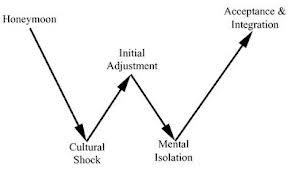Weighing the Options: Pros and Cons of Private Colleges vs. Public Colleges
Jun 19,2023
Choosing the right college is a significant decision that can shape a student's academic journey and future career prospects. One key consideration is whether to attend a private college or a public college. Both options offer distinct advantages and disadvantages that prospective students should carefully evaluate. In this article, we explore the pros and cons of attending private colleges versus public colleges to help students make an informed choice.
Private Colleges: Pros and Cons
Pros:
-
Smaller Class Sizes and Personalized Attention: Private colleges often boast smaller student-to-faculty ratios, which allows for more personalized attention from professors. This can lead to deeper engagement, individualized guidance, and enhanced learning experiences.
-
Specialized Programs and Focus: Private colleges often excel in specialized fields, offering unique programs, research opportunities, and internships tailored to specific disciplines. Students can benefit from access to cutting-edge facilities and resources that support their academic interests.
-
Robust Alumni Networks and Career Connections: Private colleges often have strong alumni networks that can provide valuable career connections and mentorship opportunities. These networks can offer internships, job placements, and networking events, facilitating post-graduation employment prospects.
-
Generous Financial Aid and Scholarships: While private colleges generally have higher tuition fees, they also tend to have more substantial endowments, which can translate into more financial aid and scholarship opportunities. This can help offset the cost of attendance for eligible students.
Cons:
-
Higher Tuition Costs: Private colleges typically have higher tuition fees compared to public colleges. This can lead to a significant financial burden for students and their families. It is crucial to carefully consider the affordability of private education and assess the long-term financial implications.
-
Limited Diversity and Campus Size: Some private colleges have smaller student populations and may lack the diversity and multicultural experiences that larger public institutions offer. Students seeking a diverse and vibrant campus community may find public colleges more appealing in this regard.
Public Colleges: Pros and Cons
Pros:
-
Lower Tuition Costs for In-State Residents: Public colleges, particularly for in-state residents, generally have lower tuition costs compared to private colleges. This affordability can make higher education more accessible for many students.
-
Diverse Campus Communities: Public colleges often attract a more diverse student body, offering exposure to various cultures, backgrounds, and perspectives. This diversity enriches the learning environment and fosters a broader understanding of the world.
-
Extensive Program Offerings: Public colleges often have a wide range of academic programs and majors to choose from, providing students with greater flexibility in tailoring their education to their interests and career goals.
-
Extensive Resources and Facilities: Public colleges typically have larger campuses, extensive libraries, research facilities, and athletic complexes. These resources can offer students a robust learning environment and access to state-of-the-art facilities.
Cons:
-
Larger Class Sizes and Limited Personalized Attention: Public colleges tend to have larger class sizes, resulting in less individualized attention from professors. This can make it more challenging for students to build close relationships with faculty members and receive personalized academic support.
-
Limited Financial Aid for Out-of-State Students: Public colleges often have significantly higher tuition costs for out-of-state students, and financial aid opportunities may be more limited. This can pose challenges for non-residents seeking affordability in their education.
-
Administrative Challenges: Due to their larger size, public colleges may have more bureaucratic processes and administrative challenges. Students may need to navigate complex systems when accessing resources, registering for classes, or seeking academic advice.
Choosing between a private college and a public college requires careful consideration of individual preferences, academic goals, financial circumstances, and desired campus experiences. Private colleges offer advantages such as personalized attention, specialized programs, and robust alumni networks, but they come with higher tuition costs. On the other hand, public colleges provide affordability, diverse campus communities, extensive resources, but may have larger class sizes and administrative complexities. Ultimately, students should weigh the pros and cons, visit campuses, and consider their unique aspirations to make an informed decision that aligns with their educational and personal goals.






